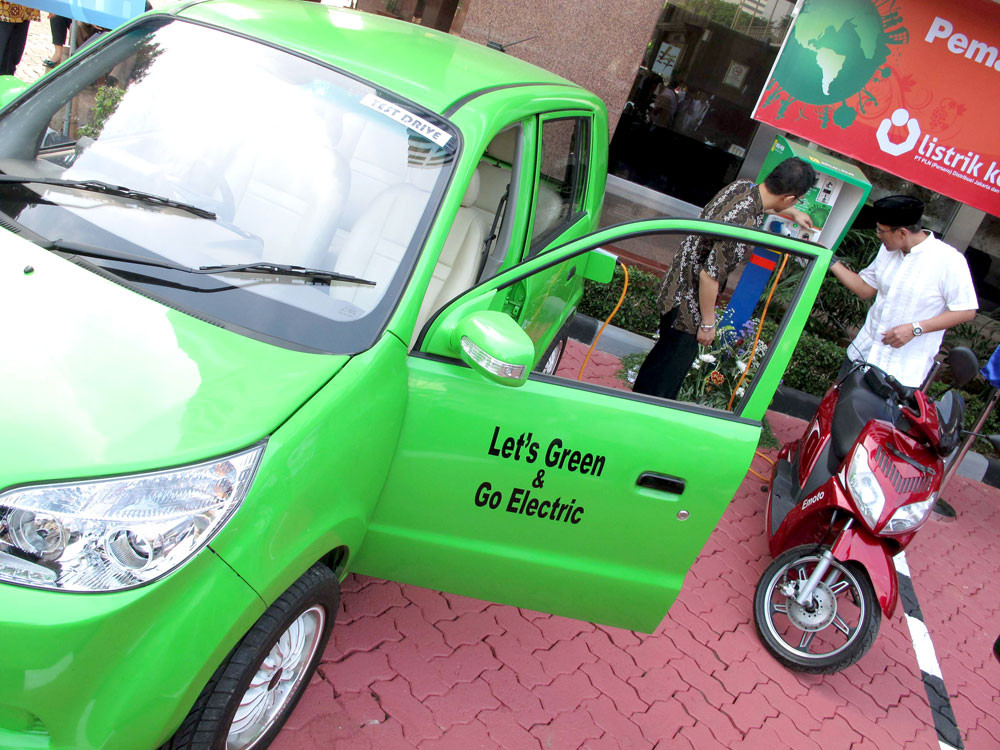Popular Reads
Top Results
Can't find what you're looking for?
View all search resultsPopular Reads
Top Results
Can't find what you're looking for?
View all search resultsHow far can electric cars go?
Change text size
Gift Premium Articles
to Anyone
T
he government took a step forward in realizing its commitment to replacing internal combustion engine (ICE) vehicles with cleaner electric vehicles (EV) by enacting on Aug. 12 a regulation on a basic policy for EV development.
The regulation stipulates an 80 percent local content requirement for the production of electric motorcycles by 2026 and electric cars by 2030. However, judging from the commercial viability of the program and the experiences of countries in Europe and Asia, notably China, that began developing EVs several years ago, it will likely take more than 15 years for Indonesia to build a viable EV manufacturing industry.
The main concern is the price of the battery, which means electric cars are priced more than 35 percent higher than ICE car, as well as the range capacity of the battery, as to when electric cars will run out of power before reaching a charging point.
Hence, strong government support through generous fiscal and nonfiscal incentives is needed from the outset to reduce costs and encourage motorists to turn to EVs. The regulation, therefore, allows the finance minister to provide various fiscal incentives and other ministers and regional governments to grant preferential treatment to incentivize the use of EVs.
Although the regulation offers a wide range of incentives and preferential treatment, it may not immediately attract investors to develop the country’s EV manufacturing industry. Investors will still wait for technical details on the incentives, as the enforcement of the regulation still needs support from ministerial decrees. Investors are also curious about government policy to phase out ICE cars.
Yet more crucial for investors is an assurance that the EV development policy will remain consistent for at least the next 15 to 20 years, the period in which market demand is expected to become high enough to enable domestic producers to achieve economies of scale and for advances in battery technology to reduce costs and increase range capacity.
Given the importance of economies of scale for enabling EVs to compete with ICE cars, the government should not allow too many EV players to begin local manufacturing. The number of manufacturers should be limited in such a way as to allow for fair competition but remain adequate for enabling commercial production.
To provide incentives for investment in EV development, the government should offer licenses for importing built-up and completely-knocked down EVs only to the companies licensed to eventually manufacture EVs.
The government should also do everything possible from the beginning to address motorists’ concerns about charging facilities, including where they are located and how long it will take. Unless buyers can be reassured about the availability and speed of charging, EV development will proceed at a snail’s pace.
Hence, the role of state-owned electricity company PLN and state-owned oil and gas company Pertamina is very important, at least in the initial stages, for setting up public charging points and even in assisting households to install charging facilities at home. Certainly, EV manufacturers will also be encouraged to invest in charging networks if they enjoy economies of scale.









